Click on images to enlarge

infestation (Photo: Sheldon Navie)
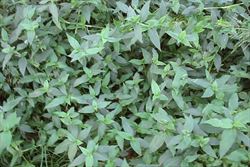
habit (Photo: Sheldon Navie)
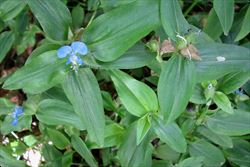
habit (Photo: Sheldon Navie)
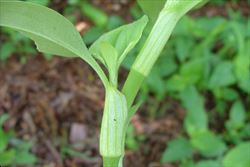
close-up of stems and hairy sheath-like leaf bases (Photo: Sheldon Navie)

leaves (Photo: Sheldon Navie)
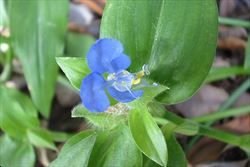
close-up of flower with hairy floral bracts (Photo: Sheldon Navie)
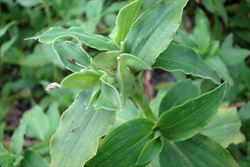
hairy floral bracts containing immature fruit (Photo: Sheldon Navie)

mature fruit with seeds (Photo: Sheldon Navie)
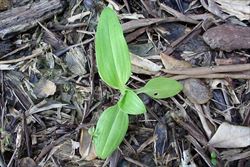
seedling (Photo: Sheldon Navie)

young plant (Photo: Sheldon Navie)

habit of the very similar native commelina, Commelina diffusa (Photos: Sheldon Navie)

close-up of the flowers and hairless floral bracts of the native commelina, Commelina diffusa (Photos: Sheldon Navie)
Scientific Name
Commelina benghalensis L.
Family
Commelinaceae
Common Names
Benghal dayflower, commelina, day flower, dayflower, dew flower, hairy commelina, hairy wandering Jew, Indian dayflower, jio, tropical spiderwort, wandering Jew
Origin
Native to Africa (i.e. Djibouti, Ethiopia, Somalia, Kenya, Tanzania, Uganda, Cameroon, Congo, Rwanda, Benin, Ivory Coast, Gambia, Ghana, Guinea, Nigeria, Sierra Leone, Togo, Malawi, Zambia, Botswana, Lesotho, Namibia, South Africa and Swaziland), the Arabian Peninsula (i.e. Saudi Arabia), the Indian Sub-continent (i.e. Bhutan, India, Nepal, Pakistan and Sri Lanka), southern China, Japan and south-eastern Asia (i.e. Indo-china, Indonesia and the Philippines).
Naturalised Distribution
Widely naturalised in Australia, but primarily found in the northern and eastern parts of the country. It is widespread in Queensland and naturalised in northern New South Wales (i.e. north from the Comboyne area) and the northern parts of the Northern Territory.
Also naturalised on Christmas Island and in many other parts of the world.
Notes
This species is regarded as an environmental weed in south-eastern Queensland and northern New South Wales. Hairy commelina (Commelina benghalensis) is listed among the top 200 invasive plants in south-eastern Queensland and is a common weed of waterways and riparian areas in this region.
It has also invaded conservation areas in northern New South Wales (e.g. the Ballina Nature Reserve) and is an important weed of crops in eastern Australia.

